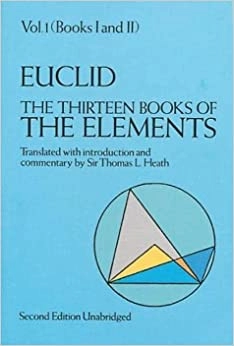Reading Level
What is the reading level of The Thirteen Books of the Elements, Vol. 1 ?
Analysing the books in the series, we estimate that the reading level of The Thirteen Books of the Elements, Vol. 1 is 13th and 14th grade.
Expert Readability Tests for
The Thirteen Books of the Elements, Vol. 1
| Readability Test | Reading Level |
|---|---|
| Flesch Kincaid Scale | Grade 13 |
| SMOG Index | Grade 14 |
| Coleman Liau Index | Grade 32 |
| Dale Chall Readability Score | Grade 7 |
- Authors
More about The Thirteen Books of the Elements, Vol. 1
464 pages
Pages
Description
This is the definitive edition of one of the very greatest classics of all time — the full Euclid, not an abridgement. Using the text established by Heiberg, Sir Thomas Heath encompasses almost 2,500 years of mathematical and historical study upon Euclid.This unabridged republication of the original enlarged edition contains the complete English text of all 13 books of the Elements, plus a critical apparatus that analyzes each definition, postulate, and proposition in great detail. It covers textual and linguistic matters; mathematical analyses of Euclid’s ideas; classical, medieval, Renaissance, modern commentators; refutations, supports, extrapolations, reinterpretations, and historical notes, all given with extensive quotes.“The textbook that shall really replace Euclid has not yet been written and probably never will be.” — Encyclopaedia Britannica.Volume 1. 151-page Introduction: life and other works of Euclid; Greek and Islamic commentators; surviving mss., scholia, translations; bases of Euclid’s thought. Books I and II of the Elements, straight lines, angles, intersection of lines, triangles, parallelograms, etc.Volume 2. Books III-IX: Circles, tangents, segments, figures described around and within circles, rations, proportions, magnitudes, polygons, prime numbers, products, plane and solid numbers, series of rations, etc.Volume 3. Books X to XIII: planes, solid angles, etc.; method of exhaustion in similar polygons within circles, pyramids, cones, cylinders, spheres, etc. Appendix: Books XIV, XV, sometimes ascribed to Euclid. Read more
